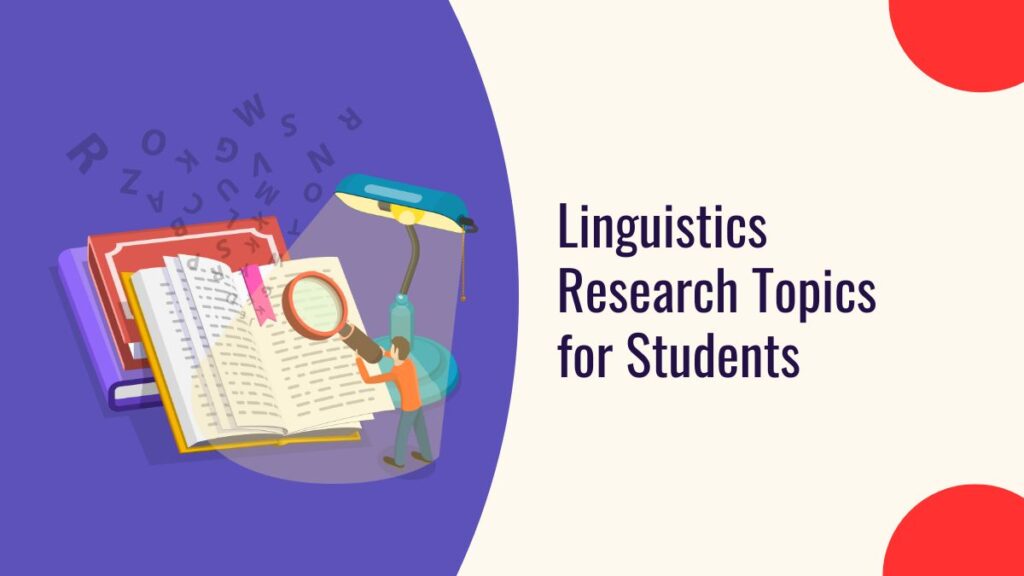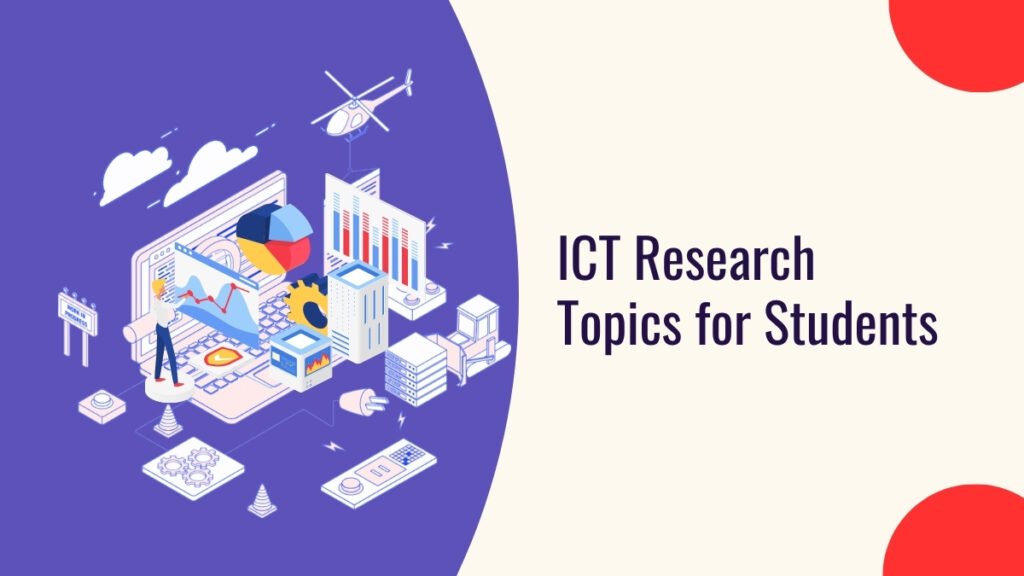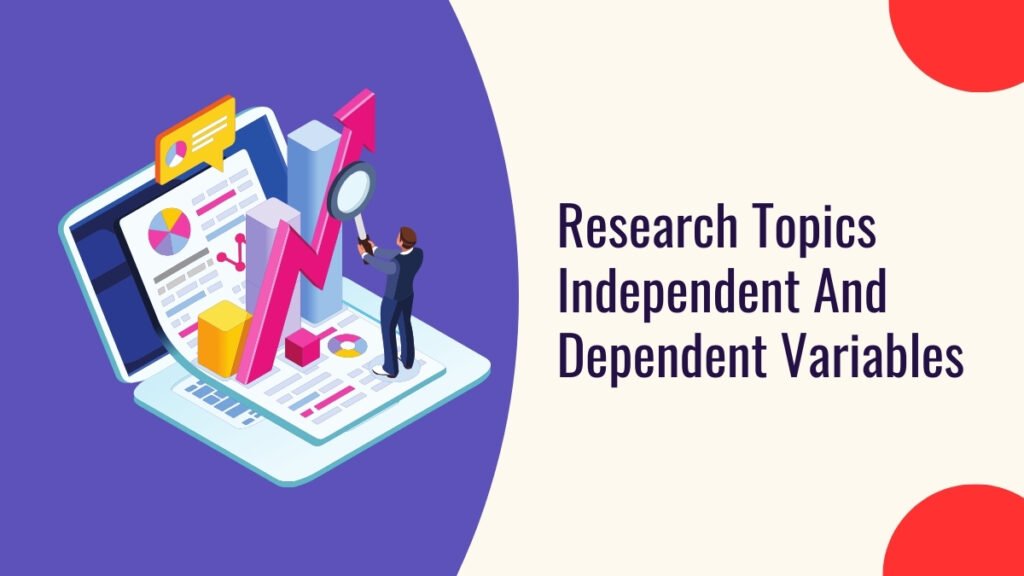Delve into the fascinating world of linguistics with the best linguistics research topics! Explore the study of language, its structures, meanings, and evolution, while uncovering the complexities of human communication and culture
What lies at the core of human communication? Linguistics, the scientific study of language, delves into the intricacies of how we convey meaning, structure our thoughts, and engage with one another. As students explore this fascinating field, the choice of research topic becomes a pivotal step in their academic journey.
Selecting a compelling topic not only ignites curiosity but also fosters deeper insights into the linguistic phenomena that shape our world. In this article, we’ll explore what linguistics research topics are, how to choose an engaging topic, and present over 100 thought-provoking research ideas for students in linguistics.
Linguistics Research Topics PDF
What Are Linguistics Research Topics?
Linguistics research topics encompass various subjects related to the study of language. This field includes the examination of phonetics, syntax, semantics, morphology, pragmatics, sociolinguistics, psycholinguistics, and language acquisition.
Research topics can explore how language functions, how it evolves over time, its social implications, and how it is processed in the brain. Engaging with these topics allows researchers to contribute to the broader understanding of language and its significance in human interaction.
How to Pick a Great Linguistics Research Topic?
Choosing a compelling linguistics research topic involves several considerations:
| Consideration | Description |
|---|---|
| Personal Interest | Select a topic that resonates with you. Your passion for the subject will motivate you to explore it deeply. |
| Relevance | Ensure the topic addresses current issues or trends in linguistics, such as emerging languages, language preservation, or the impact of technology on communication. |
| Specificity | Choose a topic that is narrow enough to allow for focused research but broad enough to find sufficient resources. |
| Availability of Resources | Make sure there are enough academic resources, such as books, articles, and studies, to support your research. |
| Originality | Aim for a unique angle on an existing topic or a lesser-explored area within linguistics. |
Great and Useful Linguistics Research Topics
Check out great and useful linguistic research topics:-
Phonetics and Phonology
Sounds of Speech
Definition: Study speech sounds.
Types of Sounds: Consonants and vowels.
Importance: Understanding pronunciation.
Phonemes and Allophones
Phoneme Definition: Basic sound unit.
Allophone Definition: Variations of phonemes.
Examples: Show examples from languages.
Intonation and Stress
Intonation: Variation in pitch.
Stress: Emphasis on certain syllables.
Effects: Influence meaning and emotion.
Sound Patterns in Languages
Phonotactics: Rules for sound combinations.
Patterns: Common patterns across languages.
Examples: Give specific language examples.
Vowel Harmony
Definition: Vowels matching in certain ways.
Languages: Languages that use vowel harmony.
Effects: Influence on word formation.
Suprasegmental Features
Definition: Features beyond single sounds (like stress).
Importance: Affect meaning and fluency.
Examples: Illustrate with examples.
Phonetic Transcription
Definition: Writing sounds using symbols.
Tools: Use of IPA (International Phonetic Alphabet).
Importance: Accurate representation of pronunciation.
Speech Disorders
Types: Common speech disorders (like stuttering).
Causes: Biological and environmental factors.
Treatments: Methods for speech therapy.
Sound Change Over Time
Definition: How sounds evolve in languages.
Examples: Illustrate with historical changes.
Impacts: Effects on language development.
Phonology vs. Phonetics
Phonology: Study of sound systems.
Phonetics: Study of physical sounds.
Differences: Clear distinctions between the two.
Morphology
Understanding Morphemes
Morpheme Definition: Smallest meaning unit.
Types: Free vs. bound morphemes.
Examples: Provide examples.
Word Formation Processes
Affixation: Adding prefixes/suffixes.
Compounding: Combining words.
Examples: Show examples of each process.
Inflection vs. Derivation
Inflection: Changes for grammatical purposes.
Derivation: Creating new words.
Examples: Clarify with examples.
Compounding in Languages
Definition: Joining two or more words.
Language Examples: Provide examples from various languages.
Effects: Influence on meaning and usage.
Allomorphs
Definition: Variations of a morpheme.
Examples: Show different allomorphs.
Importance: Understanding variations in usage.
Morphological Analysis
Purpose: Breaking down words into parts.
Techniques: Methods for analysis.
Applications: Use in language learning.
Morphology in Language Change
Definition: How morphology evolves.
Examples: Historical examples of changes.
Impacts: Influence on language structure.
Word Classes and Morphology
Types: Nouns, verbs, adjectives, etc.
Morphological Features: Specific features of each class.
Examples: Provide examples for clarity.
Morphological Typology
Types: Analytic, synthetic, agglutinative languages.
Characteristics: Key traits of each type.
Examples: Illustrate with language examples.
Morphology in Language Learning
Importance: Role of morphology in acquiring languages.
Teaching Methods: Effective strategies for teaching morphology.
Applications: Importance for language fluency.
Syntax
Basic Sentence Structure
Components: Subject, verb, object.
Sentence Types: Declarative, interrogative, imperative.
Examples: Provide simple examples.
Word Order in Languages
Common Orders: SVO, SOV, VSO.
Variations: Differences in languages.
Examples: Illustrate with examples.
Phrases and Clauses
Definition: Phrases (groups of words) and clauses (complete thoughts).
Types: Independent and dependent clauses.
Examples: Provide clear examples.
Syntactic Ambiguity
Definition: Multiple meanings from structure.
Examples: Show examples of ambiguous sentences.
Importance: Understanding in communication.
Constituents and Phrase Structure
Definition: Parts of sentences (constituents).
Tree Diagrams: Visualize structure of sentences.
Examples: Provide examples with diagrams.
Transformational Grammar
Definition: Rules for changing sentences.
Examples: Show transformations (e.g., active to passive).
Importance: Understanding sentence variation.
Subordination and Coordination
Subordination: Joining clauses with subordinators (like “because”).
Coordination: Joining with conjunctions (like “and”).
Examples: Provide sentence examples.
Grammatical Relations
Definition: Relationships between words in a sentence.
Types: Subject-verb, verb-object relations.
Importance: Understanding meaning and structure.
Syntax and Semantics
Connection: How syntax relates to meaning.
Examples: Show examples of syntax influencing semantics.
Implications: Importance for language understanding.
Syntactic Variation Across Languages
Variation: Differences in syntax among languages.
Influences: Factors that affect syntax.
Examples: Provide examples from different languages.
Semantics
Meaning in Language
Definition: Study of meaning.
Types of Meaning: Literal vs. implied meanings.
Importance: Understanding communication.
Lexical Semantics
Definition: Study of word meanings.
Relationships: Synonyms, antonyms, homonyms.
Examples: Provide examples of relationships.
Compositional Semantics
Definition: How meanings combine in sentences.
Examples: Show examples of combination.
Importance: Understanding sentence meaning.
Ambiguity in Meaning
Definition: Words or phrases with multiple meanings.
Examples: Provide examples of ambiguous terms.
Implications: Effects on understanding.
Pragmatics vs. Semantics
Pragmatics: Meaning in context.
Semantics: Meaning of words themselves.
Differences: Clear distinctions between the two.
Metaphor and Meaning
Definition: Comparing one thing to another.
Examples: Provide examples of common metaphors.
Importance: Influence on understanding language.
Semantic Change Over Time
Definition: How meanings evolve.
Examples: Historical examples of semantic change.
Impacts: Influence on language development.
Field Theory in Semantics
Definition: Study of meaning in specific areas (like color).
Examples: Provide examples of fields.
Importance: Understanding relationships in meaning.
Semantic Roles
Definition: Roles words play in sentences (like agent, patient).
Examples: Show roles with examples.
Importance: Understanding sentence meaning.
Cultural Influence on Meaning
Definition: How culture shapes meaning.
Examples: Provide culturally specific examples.
Implications: Importance for communication.
Pragmatics
Understanding Pragmatics
Definition: Study of language in context.
Importance: Meaning goes beyond words.
Examples: Show practical examples.
Speech Acts
Definition: Actions performed through language.
Types: Promises, requests, commands.
Examples: Provide clear examples.
Conversational Implicature
Definition: Implied meanings in conversation.
Examples: Show examples of implicature.
Importance: Understanding implied meanings.
Deixis
Definition: Words that depend on context (like “here” and “now”).
Types: Person, place, time deixis.
Examples: Provide clear examples.
Politeness Theory
Definition: How language expresses politeness.
Strategies: Positive and negative politeness.
Examples: Provide examples of strategies.
Context and Meaning
Importance: Context shapes meaning.
Examples: Illustrate with context-dependent examples.
Implications: Importance in communication.
Presupposition
Definition: Assumptions made in communication.
Examples: Show examples of presuppositions.
Importance: Understanding background knowledge.
Cohesion and Coherence
Cohesion: Linking elements in text.
Coherence: Overall clarity and logic.
Importance: Essential for effective communication.
Cross-Cultural Pragmatics
Definition: How language use varies across cultures.
Examples: Provide cross-cultural examples.
Implications: Understanding diverse communication styles.
Pragmatics in Language Learning
Importance: Role in acquiring language.
Strategies: Effective teaching methods.
Applications: Importance for fluency.
Sociolinguistics
Language and Society
Definition: Study of language in social contexts.
Importance: Understanding language variation.
Examples: Provide examples of social language use.
Dialects and Accents
Definition: Variations in language.
Types: Regional, social, ethnic dialects.
Examples: Provide examples of each.
Language and Identity
Definition: Connection between language and personal identity.
Importance: How language reflects identity.
Examples: Show examples of identity expression.
Language Change in Society
Definition: How language evolves in communities.
Factors: Social, economic, and technological influences.
Examples: Illustrate with historical changes.
Multilingualism
Definition: Use of multiple languages by individuals or communities.
Benefits: Cognitive and social advantages.
Examples: Provide multilingual examples.
Language Attitudes
Definition: Opinions about different languages/dialects.
Effects: Influence on language use and policies.
Examples: Provide examples of attitudes.
Gender and Language
Definition: How gender influences language use.
Differences: Variations in speech styles.
Examples: Show examples of gendered language.
Language and Power
Definition: Relationship between language and authority.
Examples: How language can exert power.
Importance: Understanding social dynamics.
Code-Switching
Definition: Switching between languages or dialects.
Contexts: Situations where code-switching occurs.
Examples: Provide examples of code-switching.
Sociolinguistic Research Methods
Methods: Techniques used in studying language.
Examples: Surveys, interviews, observations.
Importance: Gathering data for analysis.
Psycholinguistics
Language and the Mind
Definition: Study of how we process language.
Importance: Understanding language acquisition.
Examples: Provide examples of cognitive processes.
Language Acquisition
Definition: How people learn languages.
Stages: Phases in language development.
Importance: Key theories of acquisition.
Language Processing
Definition: How we understand and produce language.
Stages: Comprehension, production, and memory.
Examples: Provide examples of processing.
Bilingualism and Cognition
Definition: Effects of knowing multiple languages on the brain.
Benefits: Cognitive advantages of bilingualism.
Examples: Provide bilingual examples.
Language Disorders
Types: Common disorders (like dyslexia).
Causes: Biological and environmental factors.
Treatments: Methods for therapy.
Neuroscience of Language
Definition: How the brain processes language.
Brain Areas: Regions involved in language.
Research: Methods for studying the brain.
Memory and Language
Types of Memory: Short-term, long-term, working memory.
Importance: Role in language use and learning.
Examples: Provide examples of memory impact.
Metaphor in the Mind
Definition: How we understand metaphors cognitively.
Importance: Influence on comprehension.
Examples: Provide metaphor examples.
Language in Social Context
Definition: How context affects language use.
Examples: Show social influences on language.
Importance: Understanding communication dynamics.
Psycholinguistic Research Methods
Methods: Techniques used in studying language in the mind.
Examples: Experiments, surveys, cognitive tests.
Importance: Gathering data for analysis.
Historical Linguistics
Language Change Over Time
Definition: Study of how languages evolve.
Factors: Social, political, and cultural influences.
Examples: Provide historical examples.
Language Families
Definition: Groups of related languages.
Examples: Major language families (like Indo-European).
Importance: Understanding language relationships.
Sound Changes
Definition: How sounds evolve in languages.
Types: Regular vs. irregular sound changes.
Examples: Provide clear examples.
Morphological Change
Definition: How word structures change.
Examples: Illustrate with examples of changes.
Importance: Understanding language development.
Lexical Change
Definition: How word meanings and usage evolve.
Examples: Historical examples of lexical changes.
Impacts: Effects on language development.
Comparative Method
Definition: Technique for studying language relationships.
Steps: Key steps in the comparative analysis.
Importance: Understanding historical linguistics.
Grammaticalization
Definition: How words change from concrete to abstract meanings.
Examples: Provide examples of grammaticalization.
Importance: Understanding language evolution.
Language Contact
Definition: Interaction between different languages.
Effects: Borrowing and code-switching.
Examples: Provide examples of language contact.
Dialectal Variation
Definition: Differences within languages.
Factors: Social, regional influences on dialects.
Examples: Illustrate with dialect examples.
Language Death and Revival
Definition: When a language becomes extinct.
Revival Efforts: Methods to bring languages back.
Examples: Provide examples of language death and revival.
Applied Linguistics
Language Teaching Methods
Types: Communicative, grammar-translation, etc.
Importance: Understanding effective teaching.
Examples: Provide examples of methods.
Second Language Acquisition
Definition: How people learn additional languages.
Factors: Motivation, environment, age.
Importance: Impacts language learning success.
Language Assessment
Purpose: Measuring language proficiency.
Types: Tests, assessments, evaluations.
Examples: Provide assessment examples.
Translation Studies
Definition: Study of translating languages.
Challenges: Difficulties in accurate translation.
Importance: Role in communication.
Sociolinguistics in Language Learning
Importance: Understanding social factors in language use.
Examples: Show social influences on learning.
Implications: Importance for teaching.
Language and Technology
Tools: Use of technology in language learning.
Importance: Role of digital tools.
Examples: Provide technology examples.
Discourse Analysis
Definition: Study of language use in texts.
Methods: Techniques for analyzing discourse.
Examples: Provide analysis examples.
Bilingual Education
Definition: Teaching in two languages.
Benefits: Cognitive and academic advantages.
Examples: Illustrate with bilingual education examples.
Language Policy and Planning
Definition: Government decisions about language use.
Effects: Influence on language education.
Examples: Provide policy examples.
Corpus Linguistics
Definition: Study of language through large databases.
Methods: Techniques for corpus analysis.
Importance: Understanding language patterns.
Language Documentation and Preservation
Importance of Language Documentation
Definition: Recording languages for future generations.
Purpose: Preserve linguistic diversity.
Examples: Illustrate documentation efforts.
Methods of Documentation
Techniques: Audio and video recording, written records.
Importance: Capturing language accurately.
Examples: Provide examples of documentation methods.
Challenges in Documentation
Difficulties: Limited resources, lack of speakers.
Impacts: Consequences for language preservation.
Examples: Show challenges faced.
Language Endangerment
Definition: Languages at risk of disappearing.
Factors: Social, political, and economic influences.
Examples: Provide examples of endangered languages.
Revitalization Efforts
Definition: Actions to revive endangered languages.
Methods: Community programs, education.
Examples: Provide examples of revitalization.
Role of Technology in Preservation
Tools: Use of digital tools for language preservation.
Importance: Enhancing documentation efforts.
Examples: Provide technology examples.
Community Involvement
Importance: Engaging local communities in preservation.
Methods: Collaboration and awareness.
Examples: Show successful community projects.
Policy and Advocacy
Definition: Supporting language preservation through laws.
Importance: Protecting linguistic rights.
Examples: Provide policy examples.
Interdisciplinary Approaches
Definition: Collaboration across fields for preservation.
Benefits: Enriching documentation efforts.
Examples: Illustrate interdisciplinary projects.
Future of Language Preservation
Trends: Ongoing efforts and innovations.
Importance: Keeping languages alive for future generations.
Examples: Provide examples of future directions.
General Linguistics Research Topics
- Language and Identity: Explore how language shapes personal and group identities.
- Language Acquisition: Investigate how children acquire their first language.
- Dialect Variation: Study regional dialects and their social implications.
- Language and Power: Analyze how language is used to exert control in society.
Applied Linguistics Research Topics
- Language Learning Strategies: Examine effective strategies for second language acquisition.
- Bilingual Education: Assess the effectiveness of bilingual education programs.
- Language and Technology: Explore the impact of technology on language learning and teaching.
- Pragmatics in Communication: Analyze the role of pragmatics in cross-cultural communication.
Cognitive Linguistics Research Topics
- Metaphor and Thought: Investigate how metaphor influences cognitive processes.
- Language and Perception: Explore the relationship between language structure and perception.
- Embodied Cognition: Study how physical experiences shape linguistic understanding.
- Conceptual Blending: Examine the cognitive mechanisms behind metaphorical language use.
Japanese Linguistics Research Topics
- Honorifics and Social Hierarchy: Analyze the use of honorifics in Japanese and their cultural implications.
- Language Change in Modern Japanese: Investigate how globalization affects contemporary Japanese.
- Japanese Dialects: Explore variations in dialects across regions of Japan.
- Language and Gender in Japanese: Study how language reflects gender roles in Japanese society.
English Linguistics Research Topics
- Sociolinguistics of English: Investigate how social factors influence English language variation.
- English as a Global Language: Analyze the implications of English as a lingua franca.
- The Evolution of English: Study the historical changes in the English language.
- Language and Gender in English: Explore gendered language use in English-speaking communities.
Historical Linguistics Research Topics
- Comparative Method in Historical Linguistics: Analyze the methods used to reconstruct proto-languages.
- Language Change Over Time: Investigate specific case studies of language evolution.
- Language Contact and Borrowing: Study the impact of language contact on lexical borrowing.
- Syntactic Change: Explore changes in syntactic structures across historical periods.
Linguistics Research Topics for College Students
- Language and Mental Health: Examine how language use relates to mental health.
- Code-Switching: Investigate the social dynamics behind code-switching among bilingual speakers.
- Language Policies: Analyze the effects of language policies on minority languages.
- Language and Humor: Study the linguistic features of humor in different cultures.
Forensic Linguistics Research Topics
- Authorship Attribution: Analyze linguistic features to determine authorship of texts.
- Language in Legal Contexts: Explore the role of language in legal settings, such as courtroom discourse.
- Forensic Phonetics: Investigate the use of phonetics in voice identification.
- Discourse Analysis in Legal Settings: Examine how language is used in legal documents and testimonies.
Computational Linguistics Research Topics
- Natural Language Processing: Explore advancements in algorithms for understanding human language.
- Machine Translation: Analyze the challenges and innovations in automatic translation systems.
- Sentiment Analysis: Investigate techniques for assessing sentiment in textual data.
- Speech Recognition Technologies: Study the development and applications of speech recognition systems.
Corpus Linguistics Research Topics
- Corpus-based Analysis of Language Use: Explore linguistic features in large corpora.
- Lexical Trends in Contemporary English: Analyze how word usage has changed over time using corpora.
- Comparative Corpus Studies: Investigate differences in language use across different corpora.
- Genre Analysis in Corpora: Study the characteristics of specific genres using corpus methodologies.
Final Words
Choosing a research topic in linguistics opens a window into the complex world of language and communication. With over 100 diverse and engaging topics, students can delve into areas that not only pique their interest but also contribute to the broader understanding of linguistics.
Whether exploring the intricacies of phonetics, the social dynamics of language use, or the cognitive processes behind language acquisition, each topic offers a unique opportunity for discovery.
By engaging with these topics, students can sharpen their analytical skills, deepen their understanding of language, and contribute meaningful insights to the field of linguistics. Remember, the journey of research is as important as the findings themselves. Embrace your curiosity, ask critical questions, and enjoy the exploration of the fascinating world of linguistics! Happy researching!



